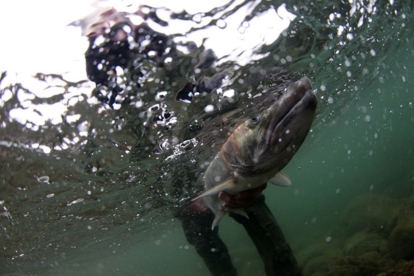How Puget Sound Wild Steelhead Gene Banks Give Salmon a Fighting Chance
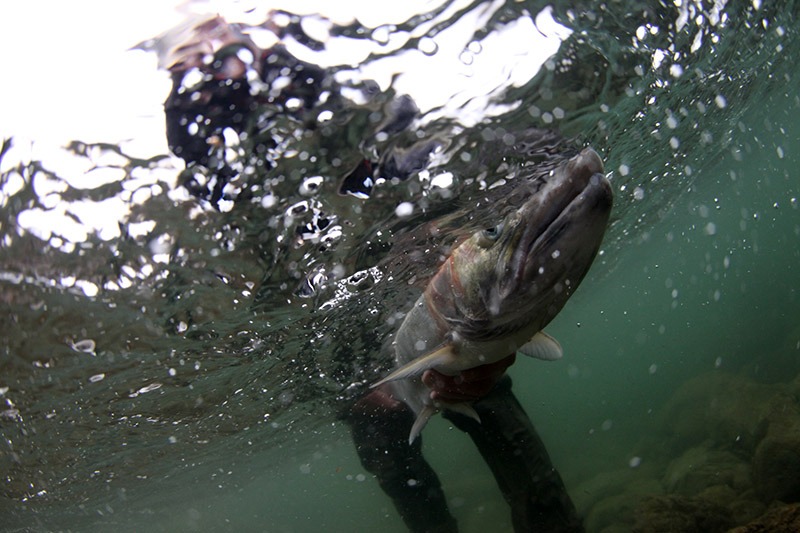
The cacophonous boom of that explosion will forever resonate within me. With the flip of a switch, one hundred years of destructive history began to wash away. It was a new day—a day in which the Elwha was finally free. At long last, its waters could once again run unabated to the sea and its steelhead inhabitants could return to their long forsaken home waters.
It had been a tough century for Elwha steelhead. Once so numerous it was common lore you could walk across the river on their backs, the Elwha’s steelhead population crashed after construction of the infamous dams. With 90 percent of the watershed choked off, their habitat was essentially rendered obsolete and their numbers nearly followed suit.
That flip of a switch gave Elwha steelhead a fighting chance, something they had not had in a century. However, the State of Washington is now poised to let another man-made roadblock further depress Elwha steelhead stocks and undermine the recovery of wild fish—steelhead hatcheries.
Above: Releasing the greatest reward, a wild steelhead. Photo: Dave McCoy
While I wish the plight of Elwha steelhead were an isolated incident, regrettably it is representative of a larger, systematic decline in which Puget Sound steelhead, a federally listed threatened species, have been reduced to a mere 3% of their historic abundance. This ubiquitous and precipitous decline has even impacted famed steelhead rivers like the Skagit.
For decades, the Skagit was a crown jewel of the steelhead world. Revered as hallowed waters, the Skagit has served as a global steelhead mecca and the grounds of steelheading innovation. But the disappearance of its steelhead has led to the dispersal of its legendary fishermen and the masses that sojourned there—a crushing blow tantamount to climbers losing El Capitan.
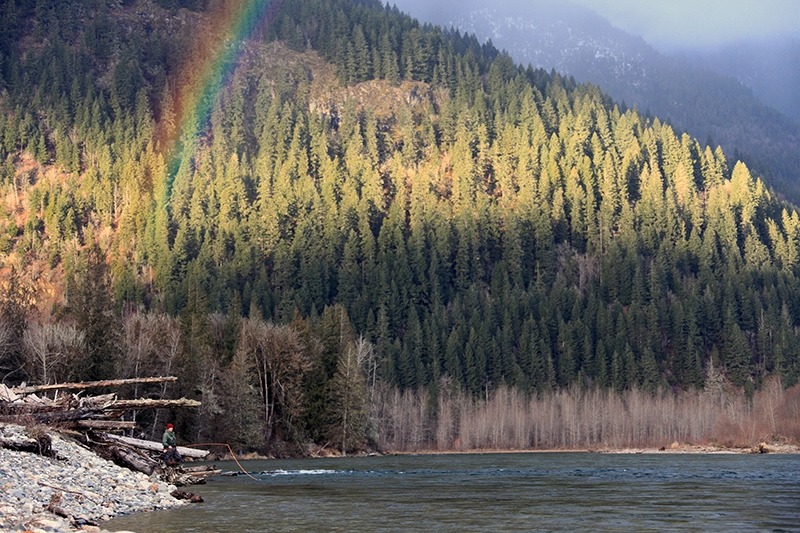 On a chilly winter day, Bobby Foster swings through a run on the Skagit in search of a steelhead. Photo: Dave McCoy
On a chilly winter day, Bobby Foster swings through a run on the Skagit in search of a steelhead. Photo: Dave McCoy
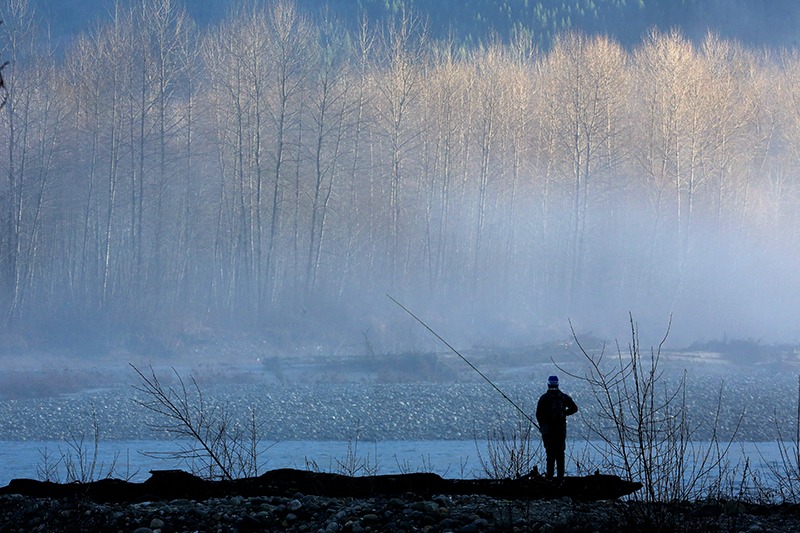 Amidst the morning mist, Jason Rolfe admires the beauty of the Sauk, the largest tributary of the Skagit. Photo: Dave McCoy
Amidst the morning mist, Jason Rolfe admires the beauty of the Sauk, the largest tributary of the Skagit. Photo: Dave McCoy
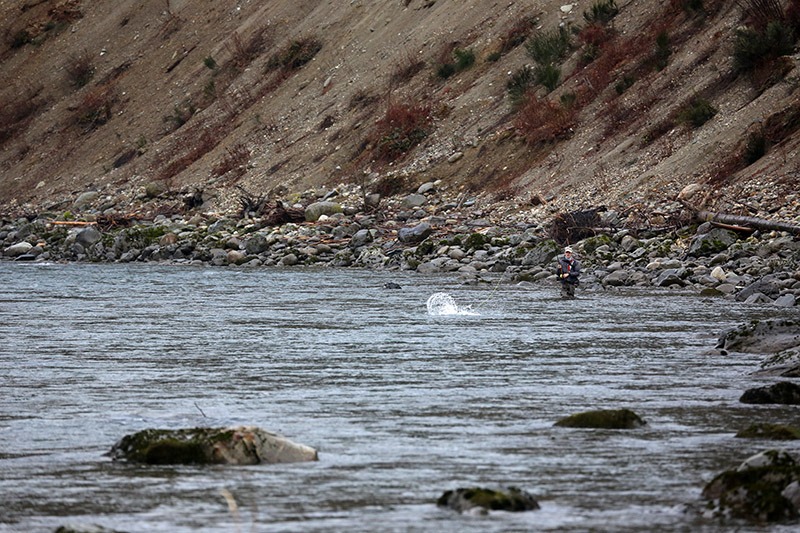 Fish on! A lively Sauk steelhead erupts from the water. Photo: Dave McCoy
Fish on! A lively Sauk steelhead erupts from the water. Photo: Dave McCoy
The pervasive loss of steelhead throughout Puget Sound and most of their native range is why that fateful explosion on the Elwha meant so much. In a world where wild steelhead populations have been disappearing at an alarming rate, the return of the Elwha was a beacon of hope. It was a rare opportunity to help rewild an iconic species that has been dealt a crushing blow by industrialization.
Part of that pernicious industrialized force has been government-engineered hatchery steelhead, the very thing used to supplement diminishing wild populations. While these manufactured fish were intended to be purely additive to wild stocks, in actuality they play a far more nefarious role as culprits of further decline. This decline occurs through a litany of ecological and genetic threats such as degrading the health and abundance of wild fish through interbreeding and increased competition for limited resources.
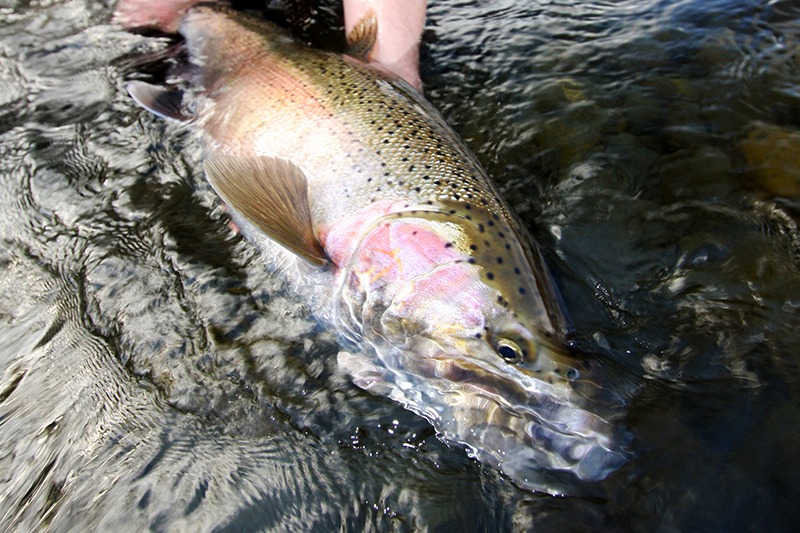 A gorgeous slab of steel is released back into the waters of the Olympic Peninsula. Photo: Dave McCoy
A gorgeous slab of steel is released back into the waters of the Olympic Peninsula. Photo: Dave McCoy
Dylan Tomine makes a short speech at the 2011 Elwha River Science Symposium about the importance of letting the Elwha heal naturally instead of restocking the river with hatchery-raised fish. Video: Patagonia
Just as we united to dismantle the Elwha dams, we now have the opportunity to come together once again to rewild the Elwha, Skagit and rivers across Puget Sound by forever eliminating the threat of hatchery steelhead. To do that, we need to speak up and tell the Washington Department of Fish & Wildlife (WDFW) to designate these rivers as Wild Steelhead Gene Banks—rivers permanently devoid of hatchery steelhead.
The creation of at least three gene banks in Puget Sound rivers is required as part of WDFW’s recovery plan for threatened steelhead. However, we are currently in the midst of a contentious fight about which rivers to designate, with hatchery proponents working vigorously to limit these designations to three smaller, less significant tributaries.
Washington steelhead advocates have united in an attempt to overpower the demands of hatchery proponents and to push for the designation of the Elwha, Skagit and Puyallup watersheds—rivers with abundance, diversity, and the best chance for success. But we need your help to make this unprecedented opportunity a reality. Together we have the power to rewild these iconic rivers and rebuild their steelhead populations. Let’s make it happen!
 TAKE ACTION: Vote for Puget Sound wild steelhead gene banks
TAKE ACTION: Vote for Puget Sound wild steelhead gene banks
Washington Department of Fish and Wildlife is currently accepting comments on selecting “Wild Steelhead Gene Banks” in three Puget Sound Regions: (1) North Cascades, (2) Central/South Puget Sound and (3) Hood Canal and Strait of Juan de Fuca. If you care about wild steelhead, please vote today. Comments must be received no later than 5p.m. Pacific time on August 13, 2015.
